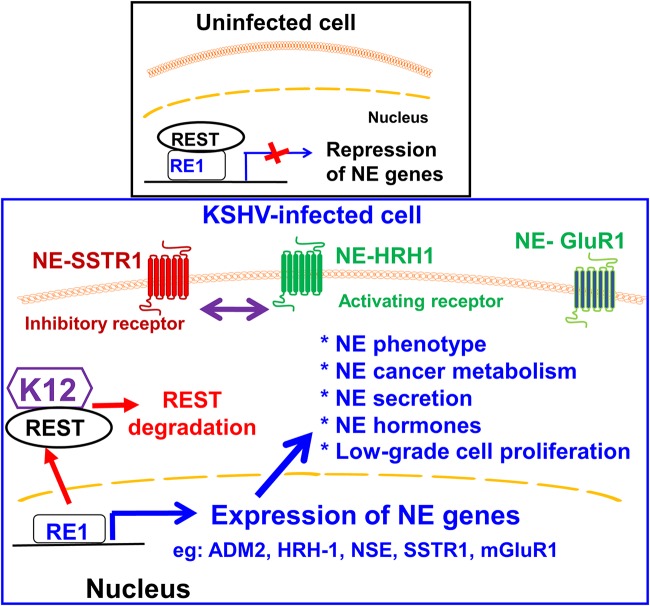FIG 8.
Model figure showing the expression of neuroendocrine genes and their effect on KSHV-infected cells. In uninfected cells, REST binds to the RE1 motif in NE genes and silences their expression (29). In infected cells, K12 (KSHV latent protein) binds and retains REST in the cytoplasm and targets REST for proteasomal degradation (29). This results in the abolition of the REST-mediated silencing effect on NE genes and the upregulation of >400 NE genes, including mGluR1 (glutamine receptor), ADM2, HRH1, NSE, PGP9.5, and SSTR1, etc., which are known to mediate neuronal and neuroendocrine functions characteristic of neuroendocrine tumors. The expression of these genes in KS patient tissues suggests that they probably provide an advantage for KSHV such as the low-grade proliferation of infected cells by the functions of NE inhibitory and activating receptors and potential escape from host immune surveillance by the expression of proteins of immunologically privileged sites such as neurons on endothelial cells. The NE gene products identified here could serve as markers for KSHV-infected endothelial cells and could potentially serve as therapeutic targets to combat KSHV-associated KS.

